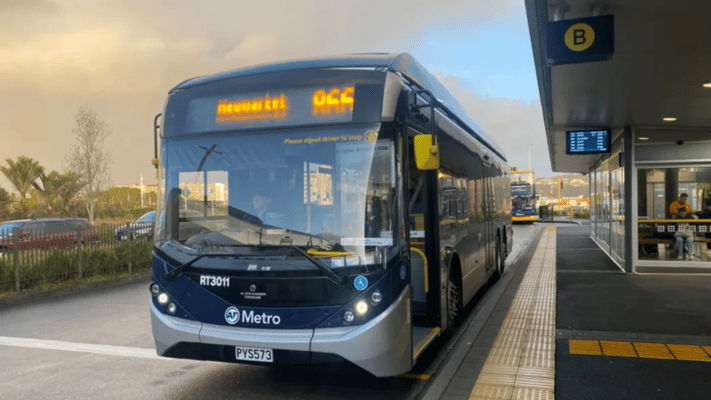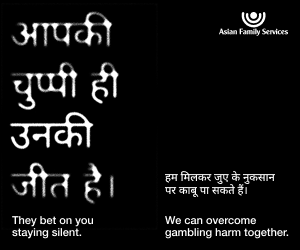Call For People To Make Everyone Feel Safe On Public Transport

- Women are more likely to avoid taking public transport because of harassment.
- By being an "active bystander'" and taking action to help in dangerous situations, public transport passengers can help vulnerable groups feel safer taking busses and trains.
- Violent crime has been on the rise in Auckland's public transport network.
- Auckland Transport recently welcomed nine new transport officers.
Researchers are encouraging more people to be what they call "active bystanders" to help women and vulnerable groups feel safe taking public transport.
A new University of Auckland study found when supportive bystanders were present, women and vulnerable people felt more confident taking public transport.
Violent crime on Auckland's public transport network has been on the rise, with two teen girls attacked on a bus last week and a woman was charged with disorderly behaviour and assault in a 'hate-motivated crime' last month.
The study surveyed 524 people in Auckland about how their perceptions of bystanders influenced their decision to take public transport.
Study lead Kirsten Tilleman said it built on earlier findings that women were more likely to avoid public transport for fear of harassment.
"We heard when it comes to feeling safe and secure on public transport, the presence of supportive others helps people safer. You could ask any women in particular that and you'd probably hear something similar."
Tilleman said public transport providers should train their staff in de-escalation, but also inform the public how they could help.
"We found this in our survey that not a tonne of people actually felt confident knowing what to do in a situation where they witnessed unwelcome behaviour."
She said being an "active bystander" wasn't about passengers putting themselves in harms way when they saw threatening behaviour.
It could be through showing support to a victim of harassment, taking notes of the time and details about what happen or, where possible, de-escalating aggressive behaviour when it was safe to do so.
"A common misconception for being an active bystander is the only option is to directly confront the perpetrator."
"That can be quite risky, because it can redirect that aggression to you as a bystander. Indirect actions are ones that don't acknowledge the aggressor at all. That can be providing some sort of distraction, that might be asking the person who is being targeted, hey what's the time, or what's the next stop."
She said bus drivers and security officers at stations should have clear expectations and training on what to do when confronted with aggressive behaviour.
"Having clear instructions on, okay, do I pull over the bus at the next safe spot, or if it's a train, pull over at the next station. Knowing how to, in a de-escalating way, address what's happening in their vehicle."
- Women are more likely to avoid taking public transport because of harassment.
- By being an "active bystander'" and taking action to help in dangerous situations, public transport passengers can help vulnerable groups feel safer taking busses and trains.
- Violent crime has been on the rise in...
- Women are more likely to avoid taking public transport because of harassment.
- By being an "active bystander'" and taking action to help in dangerous situations, public transport passengers can help vulnerable groups feel safer taking busses and trains.
- Violent crime has been on the rise in Auckland's public transport network.
- Auckland Transport recently welcomed nine new transport officers.
Researchers are encouraging more people to be what they call "active bystanders" to help women and vulnerable groups feel safe taking public transport.
A new University of Auckland study found when supportive bystanders were present, women and vulnerable people felt more confident taking public transport.
Violent crime on Auckland's public transport network has been on the rise, with two teen girls attacked on a bus last week and a woman was charged with disorderly behaviour and assault in a 'hate-motivated crime' last month.
The study surveyed 524 people in Auckland about how their perceptions of bystanders influenced their decision to take public transport.
Study lead Kirsten Tilleman said it built on earlier findings that women were more likely to avoid public transport for fear of harassment.
"We heard when it comes to feeling safe and secure on public transport, the presence of supportive others helps people safer. You could ask any women in particular that and you'd probably hear something similar."
Tilleman said public transport providers should train their staff in de-escalation, but also inform the public how they could help.
"We found this in our survey that not a tonne of people actually felt confident knowing what to do in a situation where they witnessed unwelcome behaviour."
She said being an "active bystander" wasn't about passengers putting themselves in harms way when they saw threatening behaviour.
It could be through showing support to a victim of harassment, taking notes of the time and details about what happen or, where possible, de-escalating aggressive behaviour when it was safe to do so.
"A common misconception for being an active bystander is the only option is to directly confront the perpetrator."
"That can be quite risky, because it can redirect that aggression to you as a bystander. Indirect actions are ones that don't acknowledge the aggressor at all. That can be providing some sort of distraction, that might be asking the person who is being targeted, hey what's the time, or what's the next stop."
She said bus drivers and security officers at stations should have clear expectations and training on what to do when confronted with aggressive behaviour.
"Having clear instructions on, okay, do I pull over the bus at the next safe spot, or if it's a train, pull over at the next station. Knowing how to, in a de-escalating way, address what's happening in their vehicle."









Leave a Comment